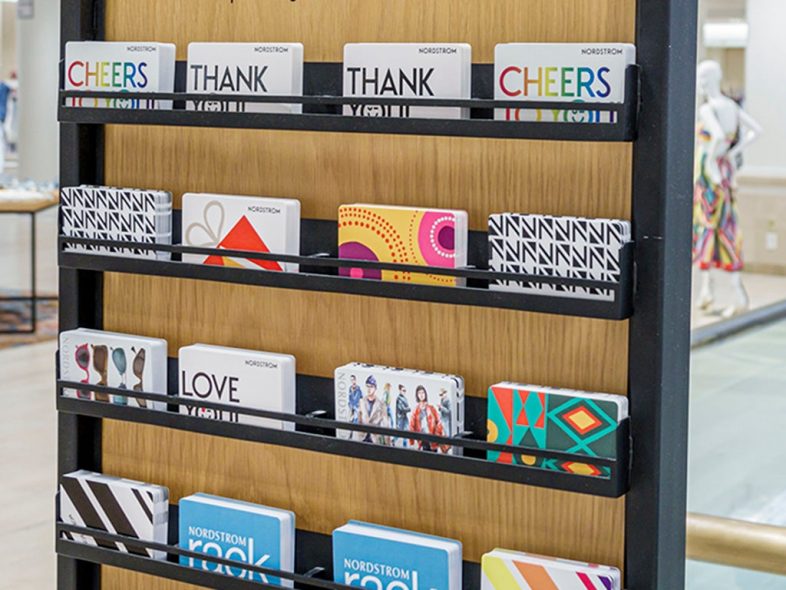Gift cards are extremely popular for a number of reasons. You can purchase them in almost any quantity and exchange them either for cash or for goods and services at a wide variety of retail stores. As a recipient, you may be able to use a plastic card or an electronic code.
But while gift cards are simple and convenient, millions of dollars go unused each year. According to a new CreditCards.com study by YouGov.com, 47% of American adults have at least one unused gift card, voucher or store credit.
With inflation making it increasingly difficult for many consumers to make ends meet, finding a gift card (or two) with a balance to spend can be a huge relief.
You (maybe) have money
According to the survey, the average amount of unspent gift cards, vouchers and store credits is $175 per person, up from $116 last year. Combined, this adds up to approximately $21 billion of unspent cash for the entire U.S. adult population.
If you are a young person, be extra careful and check your pockets and messages for any missed gift cards. 52% of millennials and 51% of Gen Z have an unused device. However, this does not mean that older people are unlikely to collect dust on these gift cards. They are also found in 43% of Gen Xers and 42% of Boomers.
Not only is it exciting to have this extra cash on hand, but the amounts available can be significant. On average, millennials have the most money on gift cards at $226. Gen Xers have $180, Gen Zers have $149, and Boomers have $133 willing to spend.
Now is the time to use those gift cards, says Ted Rossman, senior industry analyst at CreditCards.com. “With inflation at a 40-year high, everyone is looking for ways to save money,” he says. “Making unused gift cards work is an easy way to unlock some hidden value.”
Statistically, income matters.
The likelihood that you have unclaimed funds on a gift card corresponds to your level of income. According to the survey, if you are in the lowest income group, the less likely you are to have unclaimed money.
41% of respondents with an annual household income of less than $50,000 have gift cards ready to use. This probability increases with an increase in annual household income. 53% of people earning $50,000 to $79,999 have unused gift cards, and 57% of those earning $80,000 to $99,999 do. The highest income group saw a slight decline, with 56 percent of people with $100,000 annual household income having at least one unused gift card.
Income also determines the amount of gift card credit. Among those with unused gift cards, those with an annual household income of less than $50,000 have an average of $128 to spend. And $165 is owed to people making $50,000 to $79,999, while $227 is owed to people making $80,000 to $99,999, and $265 is owed to those making $100,000 or more.
Gift card holders say they’ll use them in a year
The survey also showed that 45 percent of people who have unused gift cards say they will use them all within the next 12 months. Others will wait: 30% say they will use most of their cards, while 16% plan to use a few. The remaining 9% say they will keep all their gift cards.
These numbers change with age. Seniors say they’ll be cashing in their gift cards soon: 55% of Boomers and 46% of Gen Xers plan to take their cards to stores within the next year. Forty percent of millennials say they will, but only 33 percent of Gen Z plan to use all of their unused cards within the next 12 months.
However, intentions do not always come true. The survey also showed that 71% of respondents have at least one unused gift card for at least a year, and 23% have at least three gift cards that are at least a year old.
Don’t let gift cards go to waste
Too many people don’t use their gift cards at all, resulting in unnecessary financial losses. The survey showed that almost a third (29 percent) of respondents held a gift card so long that it expired.
Gift cards are also easy to lose. Twenty-five percent of respondents say they have lost at least one.
“Clean out your wallet, your purse, your trash drawer, your glove compartment—everywhere those unused gift cards might be hiding,” says Rossman.
In addition, there is the problem of closing businesses before the gift card holder can use it. Nineteen percent of those surveyed said it had happened to them.
Regardless of how it happened, almost half (47 percent) of all gift card holders ended up losing money. Millennials have been the hardest hit: 56% lost these funds, 53% Gen Z, 41% Boomers and 40% Gen X lost the money they were owed.
If you can’t use a gift card yourself, take action. One option is to re-gift the cards to save on gifts for other people.
“Re-gifting gift cards is a great way to boost your budget because you don’t have to spend money on a gift for the upcoming holiday,” says money-saving expert Andrea Voroh.
“Just make sure the gift card is valid. It’s best not to use it partially, otherwise it will be more obvious that you are over-gifting it. Check the balance of any gift card on sites like giftcardgranny.com and the Gift Card Mall. Be careful what cards you give to whom. Give a gift card only to the person who will appreciate the card of that particular merchant, vendor, or restaurant.”
In fact, 24 percent of survey participants say they do. Or you can get refunds by selling your gift cards, a strategy that 9 percent of respondents used.
“There are a number of gift card resale sites where you can exchange your unused gift cards or trade credit for cash, including Raise.com or even eBay,” Vorokh says, explaining that they can pay up to 92 percent of the value of the card. in cash.
bottom line
Whatever you do, make a plan for using these cards before it’s too late.
“Over time, they won’t become more valuable,” says Rossman. “In fact, the opposite is true, as inflation eats into value. And the longer you keep those unused gift cards, the more likely you are to lose them, forget about them, or the store goes bust.”
Methodology
CreditCards.com commissioned YouGov Plc to conduct the survey. All figures, unless otherwise noted, are provided by YouGov Plc. The total sample size was 2372 adults. Fieldwork was conducted between July 27 and July 29, 2022. Figures have been weighted and are representative of all U.S. adults (ages 18+). The survey was conducted online and meets strict quality standards. It used non-probabilistic sampling using both quotas up front at the time of collection, and then a final weighting design designed and validated to ensure nationally representative results.
Editorial disclaimer
The editorial content on this page is based solely on the objective judgment of our contributors and is not based on advertising. It was not provided or ordered by credit card issuers. However, we may receive compensation when you click on links to our partners’ products.

